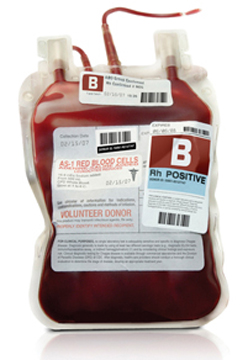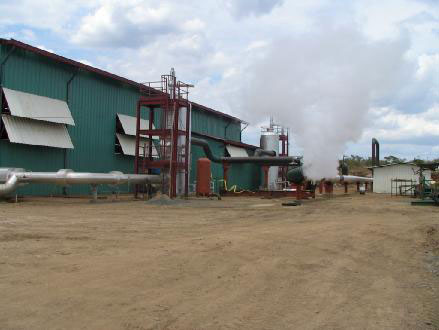People are constantly bombarding us with pleas for help, money, attention, etc. If you’d like to do something that is very helpful, personally satisfying, and definitely beneficial, donate blood. Each pint you contribute can save up to three lives. What else can you do to save three lives in 45 minutes or less?

Presently, only 37% of the US population is eligible to donate blood and less than 10% do so annually. The demand for blood is increasing however, 1 in 7 patients admitted to the hospital will require blood as part of their treatment, this adds up to 43,000 pints of blood being used each day in treatment of our population.
Donating blood is easy, safe, and fast. Make an appointment (some centers allow you to do this online and many companies have a visiting blood center onsite periodically,) eat well and drink lots of fluids the day of your donation, come in, answer a few short questions, get a quick blood pressure, iron, and temperature check, sit back in the comfy chairs while your arm is cleaned, get punctured (it doesn’t hurt – a sibling’s pinch is much worse,) let the blood flow for 10 minutes, get a bandage on your arm, sit for 15 minutes in the post-donation area to drink some fluid and have a snack while reading the paper, and you’re done. Nothing to it. The entire process with an appointment is a 45 minute time commitment.
So, if you’re a healthy adult who is at least 17 years old, and at least 110 pounds, you may donate about a pint of blood—the most common form of donation—every 56 days, or every two months. Find your local blood center online, make an appointment, and give the gift of life. What gift could be more meaningful?
In the Bay Area, I recommend Blood Centers of the Pacific.
No, I have no need of a podiatrist. And while, yes, it is embarrassing, frustrating, and inconvenient that the unit of measure for length in the US remains the foot, this entry isn’t about adoption of the metric system either. No, my daughter has decided to play soccer (football to the rest of the world.)

Curiously, one of the things a person needs to play soccer are cleats (boots in UK parlance) and the place that one would logically go to procure such foot ware is a shoe store featuring sporting shoes. Now, if your foot isn’t standard, perhaps it’s a little wider than the norm, look out!
Last night the family and I traipsed over the hill to our closest local shopping area with shoe stores featuring sporting shoes, the Serramonte District. Inside this poorly planned and executed mall-like structure, there are no fewer than four sporting shoe stores, The Finish Line, Foot Locker, Foot Action USA, and of course, Kids Foot Locker. In addition, there is a PayLess Shoe Store, Mervyn’s, Macy’s, and Target who might reasonably be expected to carry athletic shoes, well for sports.
Well sports fans, I’m here to tell you that the only store in the mall that had cleats was, drumroll please, PayLess Shoe Store. And they had one pair in the close approximate size, but nothing else. Now, why would you bother to have a store specializing in children’s athletic shoes like Kids Foot Locker and not have cleats on-hand? It’s even worse, they NEVER have stocked them according to the store manager. What they do stock are athletic-like shoes in every size and shape that are not intended for sports!
Fortunately, there are two “big box” sporting goods stores in close proximity to this mall-like structure, Sports Authority and Big 5 Sports. Sure enough, Sports Authority has 4 different lines of cleats for kids. But, they do not have a competent staff capable of finding the right cleats in the right size. No, they don’t even have the boxes organized such that a person with reading skills can stand a chance to find the right shoes, they’re all mixed together without regard to brand, size, shape, or style. When you’re looking for a size 11C with EE width, this is not helpful.
Big 5 Sports is a smaller store and at least there are staff there. At least I think they were staff and not just some form of vegetable masquerading as humans. Two lines of children’s cleats are available there and of course, none of them in the right size. It only took 30 minutes for the guy to go watch a porno in the back room while allegedly looking for the right shoes to confirm that Big 5 is no more useful than the other shoes stores in the area. (OK, I made the point up about watching the porno, but, hey, he did disappear for an inordinately long period of time.)
So, suffice to say, my daughter will be slipping and sliding across the football pitch today because there are no freakin’ cleats available that fit her feet. That shopping experience consumed a few hours of my life I’d like back. So, retail shop owners, do us all a favor. Don’t make the name of your store indicate your carry a product you do not, it wastes time. Big box guys, how about employing someone with a clue? Or maybe just someone with an IQ higher than room temperature? Presumably, somewhere in the Bay Area (Palo Alto,) there exists a specialty store where my daughter’s athletic foot ware needs will be satisfied. In the meantime, she’ll be slip-slidin’ away.
This has been a community service announcement. We now return you to your regular broadcast.
San Jacinto Plant

Photo Credit: Polaris Geothermal
Polaris Geothermal recently reported full results for the year 2007. A detailed press release about the earnings is available here. The high points: The company got a full year of production from the Phase I of its plant in San Jacinto-Tizate, Nicaragua at around 7MWe of average output, the drilling program continued to grow Phase I to its planned 34MW target, and the full 72MW of production appears to be on track for the 2010 timeframe.
The low lights involved a question about the validity of the concession from the Nicaraguan government which was resolved and accelerating losses, the net loss rate for the company increased nearly $2M to $6.7M on the year. Shareholder concerns about Polaris have to revolve around project finance where additional dilution and access to debt financing will present distinct challenges going forward.
Rather than making this a straight financial story, one of the things that struck us about this release was the transparency of the operational aspect of the SJC plant. We applaud Polaris for disclosing this information and believe since it is there, at least at this plant on this project, we can see some of the real cost and benefit of geothermal plant operations.
In 2007 the SJC plant produced 64,778 MWh of power accounting for $3.9M in power sales and $0.7M in carbon credit sales for a grand total of $4.6M of revenue for the project. Plant operations expenses totaled $2.2M yielding a gross margin of $2.4M for the project at an average output of 7.37MW per month. Hidden in these numbers are outages of over a week in June which cost the company approximately 1,000 MWh of sales.
We can reverse engineer that the company is being compensated $10.80 per MWh for carbon credits and $60.20 per MWh for power sales against operations cost of $34 per MWh. As the project grows to 34MW and finally tops out at its planned 72MW, these numbers should improve as the plant operations costs won’t scale in a linear fashion relative to output due to economies of scale (after all, the operations infrastructure is in place now, operations cost will increase but the slope should be pretty flat.)
NCPA, an operator at the Geysers, sees operations costs of about $19 per MWh at 132MW of output. It seems reasonable to believe that Polaris could achieve that level of efficiency over time, but even if the SJC project split the difference and only improved to $26.50/MWh, there would still be interesting impacts on the bottom line.
If nothing changes except capacity and output, at a 34MW and present availability and capacity factor, the company would bring in $13.2M in power sales and $2.4M in carbon credits balanced against $7.5M in plant operations producing a pre-tax, pre-corporate expense run rate net of $8.1M. If the company was able to hit the $26.50/MWh operational improvement, that would result in a $1.7M increase to $9.8M.
At 72MW and current operational levels and assumptions, the project is a real money machine producing $28M in power sales and $5M in carbon credits against operational expense of $15.8M. With numbers this attractive, why isn’t everyone building geothermal plants? The answer lies in the development expense. Effectively, the lifetime cost of production is incurred upfront and then amortized over the lifetime of the project. Therein lies the rub, the development cost per MW of output is in the $3.2M range presently meaning to reach 72MW Polaris will likely have spent $230M developing the plant.
It’s always nice to see real numbers, thank you for disclosing Polaris and we wish you well as you build your SJC project out to scale.
Last night, the Ohio State men’s basketball team won the NIT (National Invitational Tournament) with a win over the University of Massachusetts. I have to admit, March madness hasn’t been the same without watching the Buckeyes this year, but the NIT Title is a nice consolation prize and it’s always great to end the season on a winning note.
As the late Einstein might quip, “it’s all relative.”
I suppose the standard answer would be 186,282 miles per hour. But it turns out that’s only true in a vacuum under pristine conditions. Would it surprise you to know that light has actually been stopped? How about that it’s been clocked at 38mph?
A research team at Harvard clocked light shining through sodium at -272 C at a mere 38mph. That same team managed to “freeze” light in 2006 by shining it through a Bose-Einstein condensate of the element rubidium. By contrast, shining a light through a diamond slows it to around 80,000mph.
It makes sense, but I have to say, until I read it recently in The Book of General Ignorance, it wouldn’t have occurred to me to even think about the relative speed of light traveling through different substances. If we’re ever going to get that light speed jump, I guess people ought to be doing this kind of research. After all, it would really suck traveling through space at 38mph!







